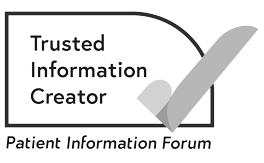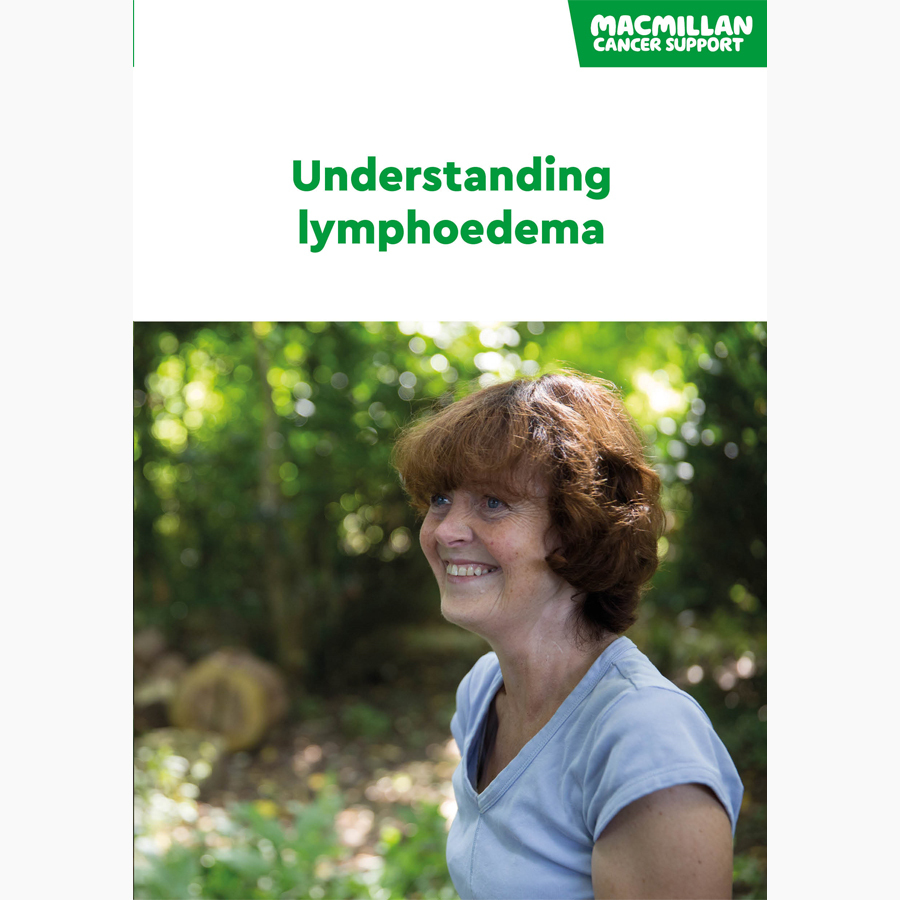Massage or other touch therapies
Massage can be used to relax your mind and body, relieve tension and enhance your mood.
What is massage therapy?
Massage therapy involves a person applying gentle pressure to your body by stroking, kneading, holding or tapping it. It can be very relaxing for both your mind and body.
Massage therapy may be available in cancer support centres, hospices, community health services and some GP surgeries. As well as specialist massage therapists, some health professionals such as nurses or physiotherapists are trained in massage therapy.
A massage therapist can massage the whole body, or focus on 1 area such as the hands, face, shoulders or feet. This means you do not always need to remove any clothing to have a massage.
How massage therapy can help if I have cancer
Massage can be used to:
- relax your mind and body
- improve your mood
- relieve tension and pain in muscles or tissue
- improve circulation.
Some studies of people with cancer suggest that massage therapy may also help reduce anxiety, depression and fatigue.
Manual lymphatic drainage for people with cancer
This is a specialised type of massage that may be used to treat lymphoedema. Lymphoedema is swelling that develops because of a build-up of lymph fluid in the body’s tissues. The lymphatic system usually drains the fluid away. Lymphoedema happens when the lymphatic system is not working properly.
MLD can improve circulation in the lymphatic system. If your healthcare team feel you would benefit from MLD they will refer you to you a lymphoedema specialist or physiotherapist trained in this.
We have more information about lymphatic drainage for lymphoedema.
Booklets and resources
Having massage therapy
There are different types of massage therapy. Massages can be soft and gentle, or more energetic.
Cancer doctors and complementary therapists usually advise you to try gentle massage and avoid vigorous, deep tissue massage. This type of massage may be uncomfortable and could be unsafe for you. Your massage therapist can change the pressure to make sure massage is comfortable for you.
A massage therapist can sometimes teach family members or friends simple massage techniques, so they can support you at home.
Massages can last for different lengths of time. Talk to your massage therapist about how long might be best for you. During cancer treatment, they may advise you not to have a massage that lasts longer than 20 minutes.
Some people may be offered a massage using aromatherapy oils. We have more information about aromatherapy.
Is it safe to have a massage if I have cancer?
Some people are worried that having a massage might cause cancer cells to spread to other parts of the body. Research has not found any evidence of this, but massage therapists will avoid any areas affected by cancer. Talk to your cancer doctor or specialist nurse if you are worried. You can discuss with your massage therapist where you would like to have massage and what they suggest will be comfortable and safe for you.
You should only have a massage from a therapist who is trained and qualified to treat people with cancer. They should have some knowledge of cancer and its treatments. It is important to tell your therapist about the cancer and the treatment you are having. You can contact the Complementary and Natural Healthcare Council (CNHC) to find a qualified massage therapist. You will need to check that they are trained and experienced in working with people who have cancer.
During your touch therapy, it is important to avoid massage to certain areas. This includes:
- areas that are directly over a tumour
- any lymph nodes (glands) affected by cancer
- open wounds, or areas that are bruised or sensitive
- areas being treated with radiotherapy, during treatment and for a few weeks after it finishes
- the area around intravenous catheters (such as central lines) and pain relief patches
- areas affected by blood clots, poor circulation or varicose veins.
It is also important to be particularly gentle if:
- the cancer has spread to your bones
- you have a low platelet count – platelets are cells that help the blood to clot.
If you bleed or bruise easily, or if you have cancer in your bones, speak to your cancer doctor or specialist nurse before having massage therapy. You will need to discuss this with your massage therapist before having massage.
About other touch-based therapies
There are many different types of touch therapy, including shiatsu, acupressure, reflexology and therapeutic touch.
Many of these therapies are based on the idea that everyone has a special type of energy that can be used to benefit health. This energy is sometimes called chi or qi.
There is no evidence that this type of energy exists, or that it can have any effect on cancer. But some people find these therapies relaxing and calming.
The therapies vary in how much physical contact they use. They may be available in some cancer support centres or hospitals. Wherever you have treatment, it is important to check that the therapist or practitioner is trained, registered and insured. You should also make sure they have experience in working with people who have cancer.
Shiatsu
Shiatsu is a type of Japanese massage. Shiatsu therapists believe that health depends on the balanced flow of energy (qi) through certain channels in the body.
Shiatsu involves a therapist applying pressure to areas of the body using their fingers and the palm of the hand. The therapist may also gently stretch or hold areas of the body to reduce stiffness and soreness. The theory is that applying pressure with a finger or hand can re-energise weak areas and reduce tension in the body. Shiatsu therapy is applied through clothing.
Shiatsu may be available at a cancer support centre or hospital.
In a study of people with cancer who had shiatsu in an NHS hospital, people said they felt less anxious and less stressed after it. It also helped with pain management and well-being.
Acupressure
Acupressure is a kind of massage, based on acupuncture. It involves putting pressure on certain points on the body, called acupoints. The therapist can teach you how to do this yourself, so you can continue the treatment at home.
Acupressure may be used to help manage:
- nausea and vomiting from chemotherapy
- pain and headaches
- stress and anxiety.
But there is little evidence that acupressure helps with these symptoms.
One type of acupressure applies pressure on a point on the inner wrist. The point is called P6. Pressure can be applied with fingers or wristbands. Some studies suggest that this may help reduce nausea after surgery.
Some studies have found that acupressure may also reduce fatigue.
Reflexology
Reflexology is based on the belief that applying gentle pressure to certain points in the feet stimulates nerve and energy pathways in other areas of the body. There is no evidence that this is the case. But many people say they feel more relaxed after reflexology, and use it to help reduce stress and anxiety.
Reflexology is seen as a safe therapy. The reflexologist applies gentle pressure to specific points on the feet, or sometimes the hands.
Reflexology cannot be used for diagnosis or treatment of cancer. Some studies have shown that reflexology may help with some symptoms such as anxiety and pain, but more research is needed. There is some evidence that reflexology may help with chemotherapy-related peripheral neuropathy which is nerve damage caused by some chemotherapy drugs.
Your therapist will ask you a few questions before any treatment to make sure it is a safe treatment for you.
Therapeutic touch
In therapeutic touch, the therapist places their hands just above or sometimes on the person. They believe this affects an energy field surrounding each person, and that therapeutic touch can help restore and balance the energy. But there is no evidence that this energy field exists. Therapeutic touch is sometimes called healing touch or spiritual healing.
There have been studies looking at the benefits of therapeutic touch. But the quality of evidence is low. Some people feel that therapeutic touch gives them valuable support and helps with relaxation and well-being.
Reiki
Reiki is a type of therapeutic touch that was developed in Japan. The person having reiki sits or lies down, and the therapist gently places their hands on or just above their body. The therapist moves their hands in a series of positions that cover most of the body. The person having reiki does not need to remove any clothing.
Some people who have reiki say that it can help them feel more relaxed. Practitioners believe it may help relieve stress and help with well-being.
Reiki therapists believe that people can have reiki from a distance. Reiki is thought to be safe to have. You can learn more from the UK Reiki Federation.
About our information
This information has been written, revised and edited by Macmillan Cancer Support’s Cancer Information Development team. It has been reviewed by expert medical and health professionals and people living with cancer.
-
References
Below is a sample of the sources used in our complementary therapies information. If you would like more information about the sources we use, please contact us at informationproductionteam@macmillan.org.uk
Balneaves LG, Watling CZ, Hayward EN, Ross B, Taylor-Brown J, Porcino A, Truant TLO. Addressing Complementary and Alternative Medicine Use Among Individuals With Cancer: An Integrative Review and Clinical Practice Guideline. J Natl Cancer Inst. 2022 Jan 11;114(1):25-37. Available from: doi: 10.1093/jnci/djab048. PMID: 33769512; PMCID: PMC8755493. [Accessed September 2023].
Integrative Medicine [Internet]. Memorial Sloan Kettering Cancer Center. 2020. Available from: www.mskcc.org/cancer-care/diagnosis-treatment/symptom-management/integrative-medicine [accessed September 2023].
NICE. Guidance on Cancer Services Improving Supportive and Palliative Care for Adults with Cancer. The Manual National Institute for Clinical Excellence [Internet]. 2019. Available from: www.nice.org.uk/guidance/csg4/resources/improving-supportive-and-palliative-care-for-adults-with-cancer-pdf-773375005 [accessed September 2023].
Overview of complementary, alternative, and integrative medicine practices in oncology care, and potential risks and harm. UpToDate. Available from: www.uptodate.com/contents/overview-of-complementary-alternative-and-integrative-medicine-practices-in-oncology-care-and-potential-risks-and-harm?source=mostViewed_widget [accessed September 2023].
Date reviewed

Our cancer information meets the PIF TICK quality mark.
This means it is easy to use, up-to-date and based on the latest evidence. Learn more about how we produce our information.
The language we use
We want everyone affected by cancer to feel our information is written for them.
We want our information to be as clear as possible. To do this, we try to:
- use plain English
- explain medical words
- use short sentences
- use illustrations to explain text
- structure the information clearly
- make sure important points are clear.
We use gender-inclusive language and talk to our readers as ‘you’ so that everyone feels included. Where clinically necessary we use the terms ‘men’ and ‘women’ or ‘male’ and ‘female’. For example, we do so when talking about parts of the body or mentioning statistics or research about who is affected.
You can read more about how we produce our information here.
How we can help




